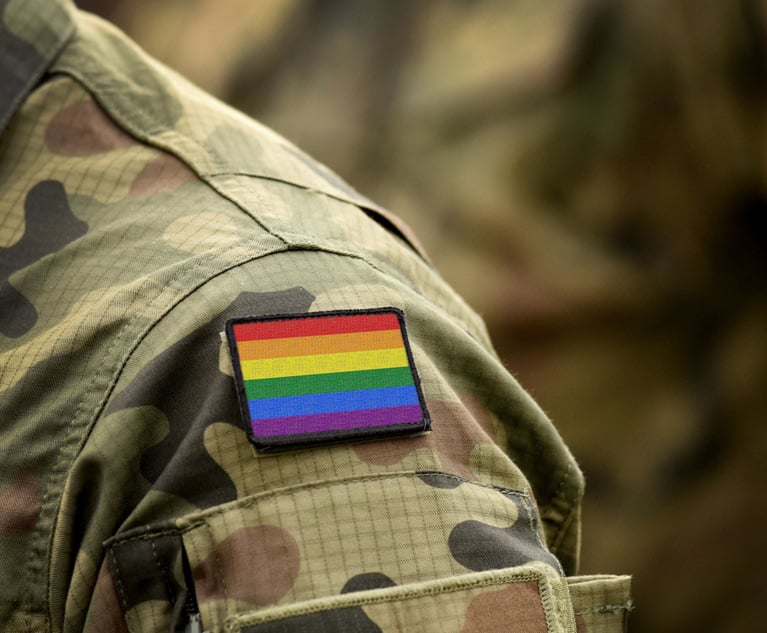 Adam J. Levitt, founding partner of DiCello Levitt. Courtesy photo
Adam J. Levitt, founding partner of DiCello Levitt. Courtesy photo Arguing Class Actions: Reevaluating the Rule Against One-Way Intervention
Arguing Class Actions is a monthly column by Adam J. Levitt for the National Law Journal.
October 07, 2024 at 06:00 AM
6 minute read
Before 1966, Rule 23 was silent on how to determine which class members would be bound by a judgment before it was entered. American Pipe & Construction v. Utah, 414 U.S. 538, 545–46 (1974). Instead, some took Rule 23 as an open invitation for potential class members to join the lawsuit without any commitments, allowing them to sit and wait until a trial was over to determine whether to definitively accept the invitation to join. If the class claims were successful, class members could intervene and reap the benefits; if the class claims failed, class members could stay on the sideline and avoid having their claims precluded. Thus, one way intervention was equivalent to "a free-agent baseball player … [sitting] on the sidelines during the middle of the playoffs while watching the Astros and the Rangers play a game, then decid[ing] which team to sign onto only after that team has won." In re Parish, 81 F.4th 403, 413 (5th Cir. 2023) (emphasis in original). This potential right of "one-way intervention" prompted the Advisory Committee to close this perceived loophole when it significantly revised Rule 23 in 1966. American Pipe, 414 U.S. at 547.
Rule 23 now provides a clear mechanism for determining who will be bound by a judgment on the merits: class certification. If the proposed class is sufficiently cohesive—i.e., it meets the requirements of Rule 23(a) and at least one of the requirements of Rule 23(b)—then Rule 23 currently reflects the policy that it is both efficient and fair to bind all class members to the eventual judgment. Importantly, Rule 23(c)(1)(A) directs courts to determine "at an early practicable time" whether to certify an action as a class action. Otherwise, without such a certification, the court's ultimate findings are only binding on the named plaintiffs. See Smith v. Bayer, 564 U.S. 299, 315 (2011) ("Neither a proposed class action nor a rejected class action may bind nonparties.").
NOT FOR REPRINT
© 2025 ALM Global, LLC, All Rights Reserved. Request academic re-use from www.copyright.com. All other uses, submit a request to [email protected]. For more information visit Asset & Logo Licensing.
You Might Like
View All
Crypto Exchange’s ‘Meteoric Rise’ Leads to Nationwide Class Action Trend
4 minute read
'The Tobacco Industry of This Decade': Slew of Class Actions Accuse DraftKings of Creating Addicts
5 minute read
Pentagon Settles Suit Seeking to Clear Records of Service Members Discharged for Being LGBTQ
3 minute readTrending Stories
- 1We the People?
- 2New York-Based Skadden Team Joins White & Case Group in Mexico City for Citigroup Demerger
- 3No Two Wildfires Alike: Lawyers Take Different Legal Strategies in California
- 4Poop-Themed Dog Toy OK as Parody, but Still Tarnished Jack Daniel’s Brand, Court Says
- 5Meet the New President of NY's Association of Trial Court Jurists
Who Got The Work
J. Brugh Lower of Gibbons has entered an appearance for industrial equipment supplier Devco Corporation in a pending trademark infringement lawsuit. The suit, accusing the defendant of selling knock-off Graco products, was filed Dec. 18 in New Jersey District Court by Rivkin Radler on behalf of Graco Inc. and Graco Minnesota. The case, assigned to U.S. District Judge Zahid N. Quraishi, is 3:24-cv-11294, Graco Inc. et al v. Devco Corporation.
Who Got The Work
Rebecca Maller-Stein and Kent A. Yalowitz of Arnold & Porter Kaye Scholer have entered their appearances for Hanaco Venture Capital and its executives, Lior Prosor and David Frankel, in a pending securities lawsuit. The action, filed on Dec. 24 in New York Southern District Court by Zell, Aron & Co. on behalf of Goldeneye Advisors, accuses the defendants of negligently and fraudulently managing the plaintiff's $1 million investment. The case, assigned to U.S. District Judge Vernon S. Broderick, is 1:24-cv-09918, Goldeneye Advisors, LLC v. Hanaco Venture Capital, Ltd. et al.
Who Got The Work
Attorneys from A&O Shearman has stepped in as defense counsel for Toronto-Dominion Bank and other defendants in a pending securities class action. The suit, filed Dec. 11 in New York Southern District Court by Bleichmar Fonti & Auld, accuses the defendants of concealing the bank's 'pervasive' deficiencies in regards to its compliance with the Bank Secrecy Act and the quality of its anti-money laundering controls. The case, assigned to U.S. District Judge Arun Subramanian, is 1:24-cv-09445, Gonzalez v. The Toronto-Dominion Bank et al.
Who Got The Work
Crown Castle International, a Pennsylvania company providing shared communications infrastructure, has turned to Luke D. Wolf of Gordon Rees Scully Mansukhani to fend off a pending breach-of-contract lawsuit. The court action, filed Nov. 25 in Michigan Eastern District Court by Hooper Hathaway PC on behalf of The Town Residences LLC, accuses Crown Castle of failing to transfer approximately $30,000 in utility payments from T-Mobile in breach of a roof-top lease and assignment agreement. The case, assigned to U.S. District Judge Susan K. Declercq, is 2:24-cv-13131, The Town Residences LLC v. T-Mobile US, Inc. et al.
Who Got The Work
Wilfred P. Coronato and Daniel M. Schwartz of McCarter & English have stepped in as defense counsel to Electrolux Home Products Inc. in a pending product liability lawsuit. The court action, filed Nov. 26 in New York Eastern District Court by Poulos Lopiccolo PC and Nagel Rice LLP on behalf of David Stern, alleges that the defendant's refrigerators’ drawers and shelving repeatedly break and fall apart within months after purchase. The case, assigned to U.S. District Judge Joan M. Azrack, is 2:24-cv-08204, Stern v. Electrolux Home Products, Inc.
Featured Firms
Law Offices of Gary Martin Hays & Associates, P.C.
(470) 294-1674
Law Offices of Mark E. Salomone
(857) 444-6468
Smith & Hassler
(713) 739-1250









